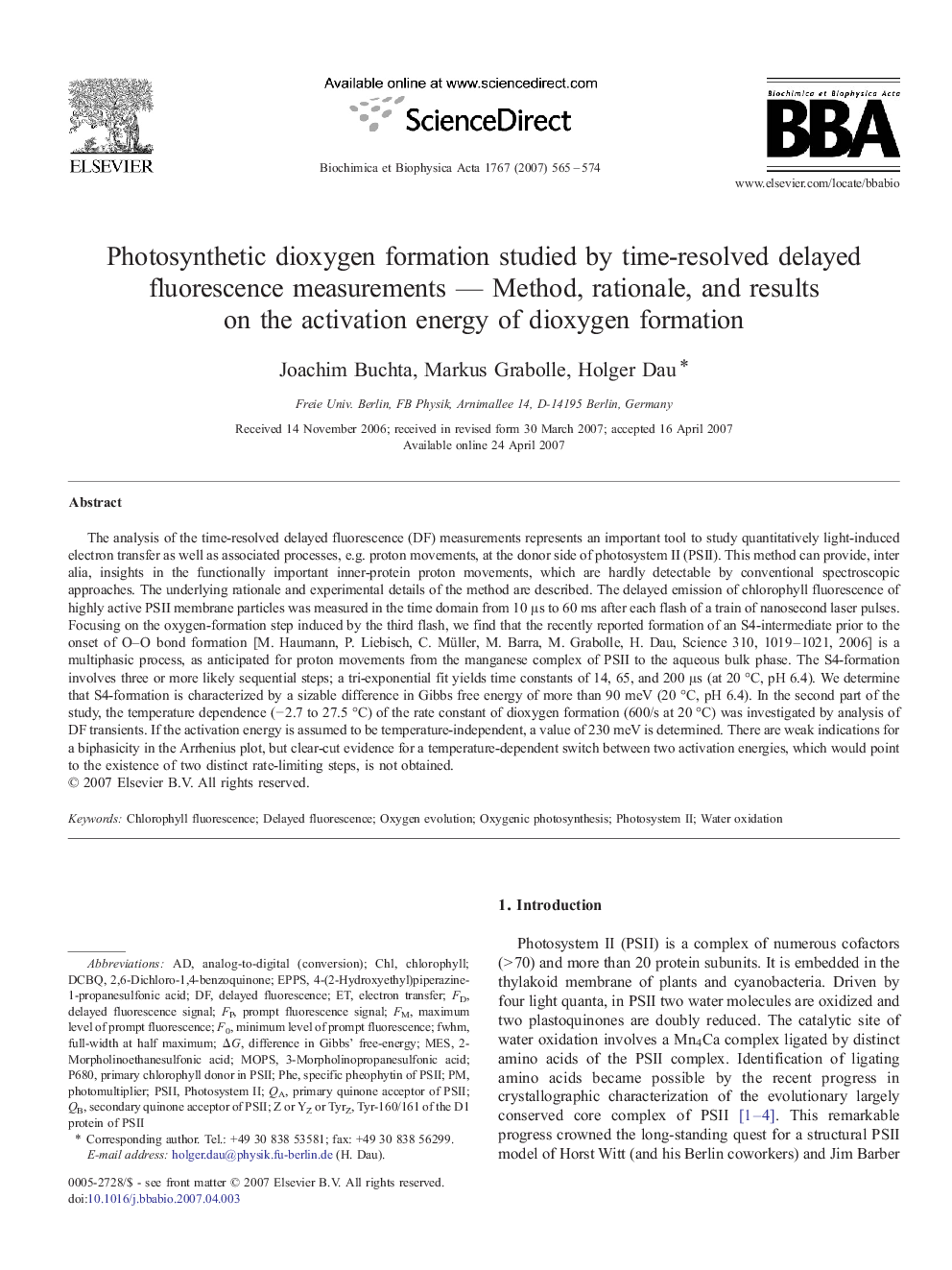| کد مقاله | کد نشریه | سال انتشار | مقاله انگلیسی | نسخه تمام متن |
|---|---|---|---|---|
| 1943559 | 1052674 | 2007 | 10 صفحه PDF | دانلود رایگان |

The analysis of the time-resolved delayed fluorescence (DF) measurements represents an important tool to study quantitatively light-induced electron transfer as well as associated processes, e.g. proton movements, at the donor side of photosystem II (PSII). This method can provide, inter alia, insights in the functionally important inner-protein proton movements, which are hardly detectable by conventional spectroscopic approaches. The underlying rationale and experimental details of the method are described. The delayed emission of chlorophyll fluorescence of highly active PSII membrane particles was measured in the time domain from 10 μs to 60 ms after each flash of a train of nanosecond laser pulses. Focusing on the oxygen-formation step induced by the third flash, we find that the recently reported formation of an S4-intermediate prior to the onset of O–O bond formation [M. Haumann, P. Liebisch, C. Müller, M. Barra, M. Grabolle, H. Dau, Science 310, 1019–1021, 2006] is a multiphasic process, as anticipated for proton movements from the manganese complex of PSII to the aqueous bulk phase. The S4-formation involves three or more likely sequential steps; a tri-exponential fit yields time constants of 14, 65, and 200 μs (at 20 °C, pH 6.4). We determine that S4-formation is characterized by a sizable difference in Gibbs free energy of more than 90 meV (20 °C, pH 6.4). In the second part of the study, the temperature dependence (− 2.7 to 27.5 °C) of the rate constant of dioxygen formation (600/s at 20 °C) was investigated by analysis of DF transients. If the activation energy is assumed to be temperature-independent, a value of 230 meV is determined. There are weak indications for a biphasicity in the Arrhenius plot, but clear-cut evidence for a temperature-dependent switch between two activation energies, which would point to the existence of two distinct rate-limiting steps, is not obtained.
Journal: Biochimica et Biophysica Acta (BBA) - Bioenergetics - Volume 1767, Issue 6, June 2007, Pages 565–574